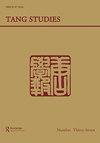Tōdai no bungaku riron: “fukko” to “sōshin”
IF 0.5
0 ASIAN STUDIES
引用次数: 0
Abstract
Serious research on Tang poetics has barely begun. The traditional scholarship of imperial China placed the rise of Tang poetry in a moralizing framework that obscured the distinction between spiritual orthodoxy and literary technique. In the 20th century, this mode was widely rejected, yet research was instead inhibited by recourse to conceptions of Chinese exceptionalism, reducing Tang poetics to one phase in a monolithic narrative of literary tradition continuous with the Book of Songs. Yet the finest scholarship of our time has already shown that the highest achievements of Tang poetry must be understood first of all in light of contingent and singular facets of that extraordinary epoch, such as its burgeoning cultural influences from Central Asia, the requirements and biases of the civil service examinations, the ongoing transformation of the Buddhist and Daoist religions, specific innovations in tonal prosody, the interregnum of Empress Wu, and the texture of Lady Yang’s stockings. The task that remains for us must be to continue exploring the specific ideological factors that inspired the flourishing of Tang poetics in its own time. In this unusually well-researched and well-documented new study, Nagata Tomoyuki of the Institute for Research in Humanities at Kyoto University has made a major contribution to the historical interpretation of Tang poetics. This is one of the most thorough treatments so far of the simple question: what did Tang people think of their own poetry? The difficulty of answering this previously has been that so little literary theory per se seems to have been written in the Tang, in striking contrast to the Six Dynasties. Professor Nagata’s solution has been to focus singlemindedly on the authentic discussions of literary values in the Tang that do remain extant. Thus the riron / lilun 理論 of the title does not really mean “theory” but should probably be understood literally as “ordered discourses” about literature. According to Nagata’s research, these texts consist essentially of two kinds: firstly, discourse evaluating the legacy of Chen Ziang陳子昂 (659–700) and upholding archaicist (fugu 復古) ideals; and secondly, the poetry manuals (shige 詩格), foremostTō戴花riron号:“fukko " " sōshin "
对唐诗的严肃研究才刚刚开始。中国帝制时期的传统学术将唐诗的兴起置于一个道德框架中,模糊了精神正统和文学技巧之间的区别。在20世纪,这种模式被广泛拒绝,但研究却被中国例外论的概念所抑制,将唐诗沦落为延续《诗经》的单一文学传统叙事的一个阶段。然而,我们这个时代最优秀的学术研究已经表明,唐诗的最高成就必须首先根据那个非凡时代的偶然和独特的方面来理解,比如来自中亚的迅速发展的文化影响,科举考试的要求和偏见,佛教和道教的持续变革,音调韵律的具体创新,武后的空白期,以及杨夫人丝袜的质地。留给我们的任务必须是继续探索激发唐诗在自己的时代蓬勃发展的具体思想因素。京都大学人文研究所的永田智之在这项研究中对唐代诗学的历史解读做出了重大贡献。这是迄今为止对唐人如何看待自己的诗歌这个简单问题的最彻底的处理之一。之前回答这个问题的困难在于,与六朝形成鲜明对比的是,唐代的文学理论本身似乎很少。永田教授的解决方案是专注于对现存的唐代文学价值的真实讨论。因此,标题中的“铁”并不意味着“理论”,而应该从字面上理解为关于文学的“有序的话语”。根据永田的研究,这些文本基本上由两种组成:第一种是评价陈子强(659-700)遗产的话语,坚持古朴主义的理想;其次,最重要的是诗歌手册
本文章由计算机程序翻译,如有差异,请以英文原文为准。
求助全文
约1分钟内获得全文
求助全文

 求助内容:
求助内容: 应助结果提醒方式:
应助结果提醒方式:


